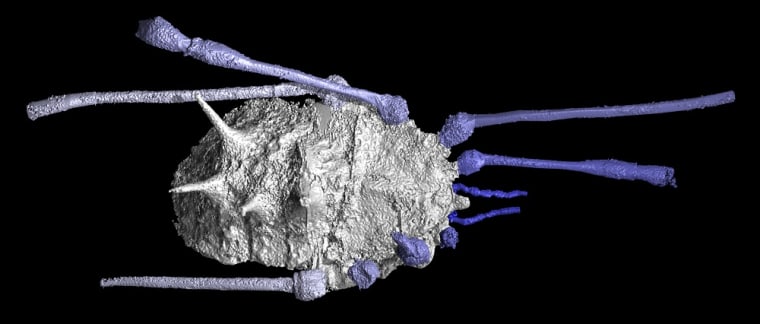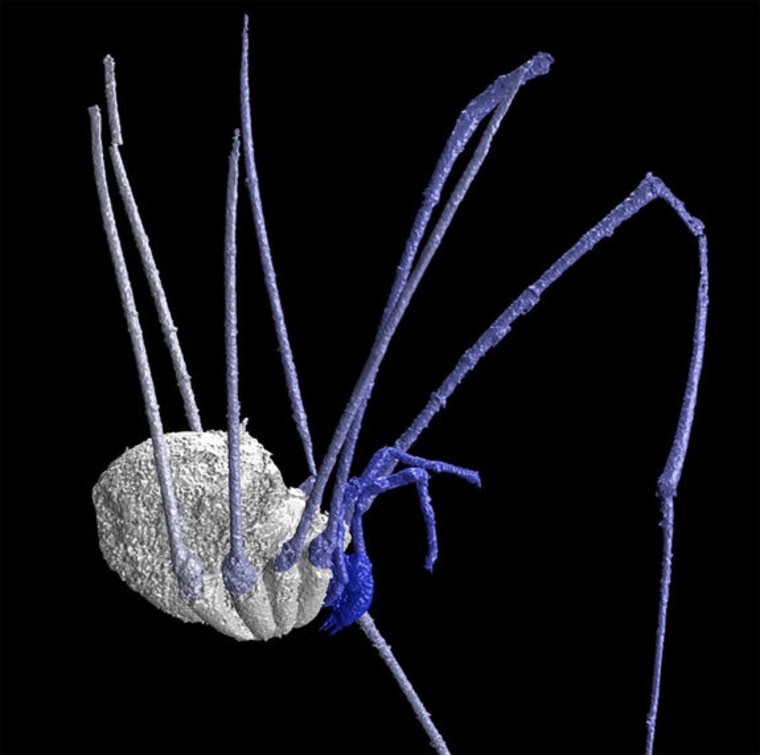Daddy longlegs have been skittering around the Earth for more than 300 million years, as confirmed by the discovery and imaging of two species that lived in the forests of what is now France before the time of the dinosaurs.
Detailed 3-D reconstructions of the two species reveal that they look surprisingly similar to modern daddy longlegs, which are also known as harvestmen and commonly mistaken for spiders. Each had eight long legs and a flat, circular body, spanning about 0.4 inches in length.
"It is absolutely remarkable how little (that) harvestmen have changed in appearance since before the dinosaurs," study researcher Russell Garwood, of Imperial College London, said in a statement. "If you went out into the garden and found one of these creatures today, it would be like holding a little bit of prehistory in your hands."
Scanning harvestmen
The two species fell into the Dyspnoi and Eupnoi suborders of harvestmen. Their physical appearance suggests they evolved from a common ancestor about 305 million years ago, the researchers said. This data support previous genetic studies of past harvestmen.

(Harvestmen aren't classified as spiders; they belong to another order of the arachnid family, Opilione.)
The images also show how these creatures lived: Eupnoi most likely used its long, curve-tipped legs to navigate and grip fallen foliage on the forest floors, which would help keep it camouflaged from predators, the researchers said. It also had a very thin body, probably the size of a dime, with a relatively soft outer shell.
The second fossil, of the suborder Dyspnoi, had spikes on its back, which the researchers believe would have protected it from predators. It also would have lived on the forest floor, amid the moist, woody debris.
Holding prehistory
The researchers can't pinpoint why these little creatures stayed so similar over time while most of their comrades, like ancient spiders and scorpions, changed so much from relatively primitive forms.
Garwood said of harvestmen, "It may be because they evolved early to be good at what they do, and their bodies did not need to change any further."
The study was published Tuesday in the journal Nature Communications.
You can follow LiveScience staff writer Jennifer Welsh on Twitter @. Follow LiveScience for the latest in science news and discoveries on Twitter and on .
